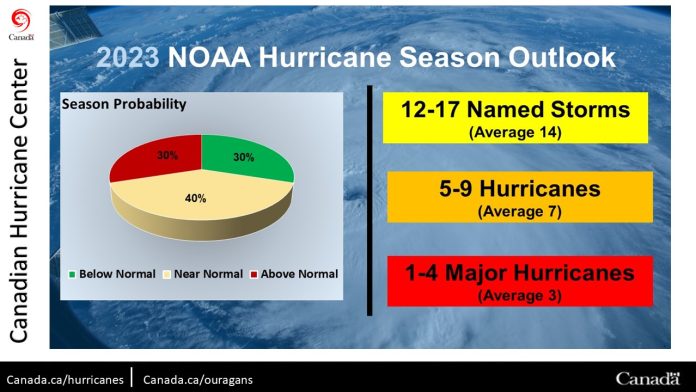Environment and Climate Change Canada’s Canadian Hurricane Centre provided the Canadian context to the United States National Oceanic and Atmospheric Administration’s outlook for the 2023 hurricane season, which officially runs from June 1 to November 30.
The United States National Oceanic and Atmospheric Administration predicts a near normal hurricane season in the North Atlantic Ocean, with a range of 12-17 total named storms. Of those 5 to 9 could become hurricanes, including1-4 major hurricanes. The Canadian Hurricane Centre and the United States National Oceanic and Atmospheric Administration work closely together to promote hurricane safety and preparedness throughout the season.
Regardless of the overall number of predicted storms, it only takes one to have substantial impacts. For instance, Hurricane Fiona was one of the worst weather events to impact eastern Canada. It caused more than 25 deaths in Canada and the United States and, as of late 2022, insurance losses tallied $846 million in Canada. Storms like Fiona serve as a reminder for people in Canada to prepare themselves, their loved ones, and their property for the possible impacts of severe weather.
Climate change is expected to increase both the average and maximum rain rates that are associated with hurricanes. Scientists have already seen an indication of an increase in the global proportion of Category 3–5 hurricanes over the past four decades. With climate change, the average intensity of hurricanes is expected to increase, though we do not expect an increase in the total number of tropical cyclones.
Get prepared and pay attention to forecasts with Canada.ca/hurricanes.








